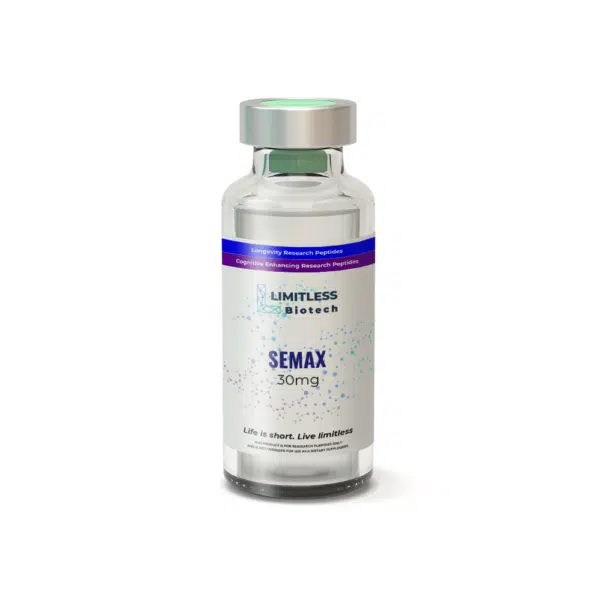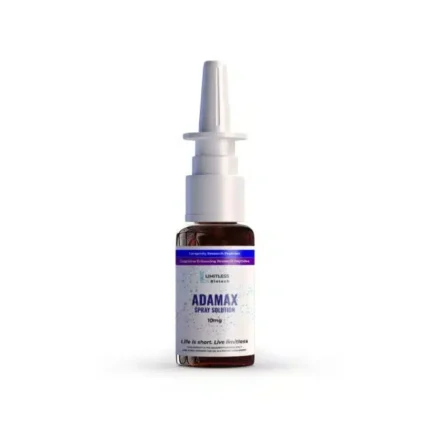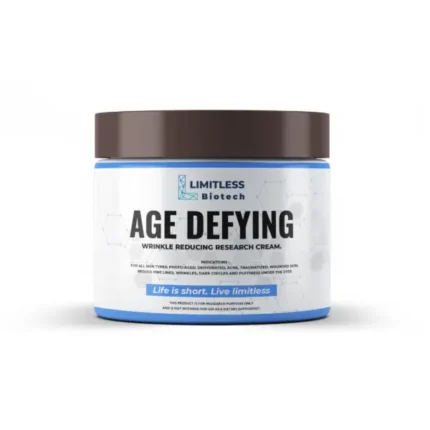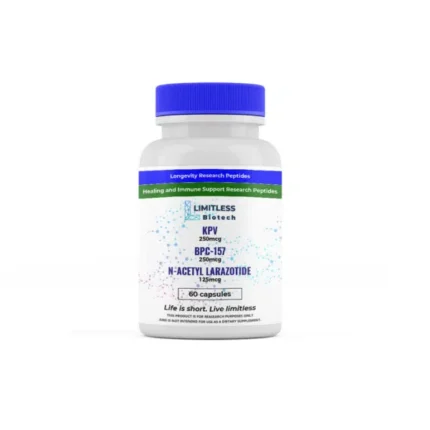The following highlights key findings across neuroprotection, cognition, stress response, and neurochemical modulation that underpin the potential research applications of this synthetic peptide.
Summary Table: Effects of Semax
| Category |
Key Effects |
| Neuroprotection & Cognition |
Increases BDNF, suppresses inflammation, protects against ischemic and toxic injury |
| Antidepressant/Antistress |
Reverses stress-induced anhedonia, modulates stress responses |
| Monoaminergic Modulation |
Enhances serotonergic and dopaminergic activity, normalizes monoamines after SSRI exposure |
| Anti-inflammatory/Immunomodulation |
Suppresses proinflammatory cytokines, enhances immune gene expression |
| Amyloid Aggregation |
Inhibits Aβ:Cu2+ complex formation and fibrillogenesis |
Neuroprotective and Cognitive Effects of Semax
Semax demonstrates significant neuroprotective and cognitive-enhancing properties. It increases brain-derived neurotrophic factor (BDNF) levels in the basal forebrain, which is associated with improved learning and memory formation, suggesting a mechanism for its effects on brain function.[1]
In models of cerebral ischemia, Semax upregulates neuroprotective proteins (such as CREB), suppresses inflammatory and cell death markers (MMP-9, c-Fos, JNK), and modulates gene expression related to immune and vascular systems, contributing to recovery and neuroprotection after ischemic stroke.[2]
Semax may also counteract neurotoxic effects of heavy metals, likely due to its antioxidant properties, further supporting its neuroprotective profile.[3]
Anxiolytic and Antistress Effects
Semax exhibits antidepressant-like and antistress effects in animal models. In a chronic unpredictable stress model, Semax reverses or attenuates stress-induced anhedonia, body weight suppression, adrenal hypertrophy, and decreases in hippocampal BDNF levels, indicating potential for treating depression and stress-related disorders.[4]
In acute stress models, Semax blocks opioid-mediated stress-induced analgesia but does not affect stress-induced behavioral changes, suggesting selective modulation of stress responses.[5]
Modulation of Monoaminergic Systems
Semax positively modulates monoaminergic neurotransmission. It enhances serotonergic activity in the striatum, as evidenced by increased 5-HIAA levels, and potentiates dopaminergic release and locomotor activity when combined with d-amphetamine.[6]
In rats exposed to early-life fluvoxamine (an SSRI), Semax normalizes brain monoamine levels, reduces anxiety-like behavior, and improves learning, indicating its ability to mitigate long-term neurochemical and behavioral disturbances caused by altered serotonin levels during development.[7]
Anti-inflammatory and Immunomodulatory Actions
Semax exerts strong anti-inflammatory and immunomodulatory effects, particularly in the context of cerebral ischemia. It suppresses the expression of proinflammatory cytokines (Il1a, Il1b, Il6, Tnfa) and chemokines, compensating for the inflammatory response induced by ischemia-reperfusion.[8]
Genome-wide analyses show that Semax predominantly enhances the expression of immune-related genes, especially those encoding immunoglobulins and chemokines, and also modulates genes involved in vascular development and function, which may underlie its neuroprotective effects.[2]
Effects on Amyloid Aggregation
Semax inhibits amyloid beta (Aβ) aggregation, particularly in the presence of copper ions, by preventing the formation of Aβ:Cu2+ complexes and interfering with fibrillogenesis. This anti-aggregating and protective property suggests potential utility in neurodegenerative conditions like Alzheimer’s disease.[9]
References
- Dolotov, O., Karpenko, E., Seredenina, T., Inozemtseva, L., Levitskaya, N., Zolotarev, Y., Kamensky, A., Grivennikov, I., Engele, J., & Myasoedov, N. (2006). Semax, an analogue of adrenocorticotropin (4–10), binds specifically and increases levels of brain‐derived neurotrophic factor protein in rat basal forebrain. Journal of Neurochemistry, 97. https://doi.org/10.1111/j.1471-4159.2006.03658.x.
- Medvedeva, E., Dmitrieva, V., Povarova, O., Limborska, S., Skvortsova, V., Myasoedov, N., & Dergunova, L. (2014). The peptide semax affects the expression of genes related to the immune and vascular systems in rat brain focal ischemia: genome-wide transcriptional analysis. BMC Genomics, 15, 228 – 228. https://doi.org/10.1186/1471-2164-15-228.
- Inozemtsev, A., Karpukhina, O., & Zindovic, N. (2023). Paradoxical Effect of Combined Exposure of Semax and Ammonium Molybdate on Learning and Memory of Rats. Journal of Clinical Physiology and Pathology. https://doi.org/10.59315/jiscpp.2023-2-2.12-15.
- Inozemtseva, L., Yatsenko, K., Glazova, N., Kamensky, A., Myasoedov, N., Levitskaya, N., Grivennikov, I., & Dolotov, O. (2024). Antidepressant-Like and Antistress Effects of the ACTH(4-10) Synthetic Analogs Semax and Melanotan II on Male Rats in a Model of Chronic Unpredictable Stress.. European journal of pharmacology, 177068 . https://doi.org/10.1016/j.ejphar.2024.177068.
- Glazova, N., Myasoedov, N., Limborska, S., Dergunova, L., Kamensky, A., Andreeva, L., Sebentsova, E., Vilensky, D., Manchenko, D., & Levitskaya, N. (2023). Effects of Semax in the Models of Acute Stress. Российский физиологический журнал им И М Сеченова. https://doi.org/10.31857/s0869813923010053.
- Eremin, K., Kudrin, V., Saransaari, P., Oja, S., Grivennikov, I., Myasoedov, N., & Rayevsky, K. (2005). Semax, An ACTH(4-10) Analogue with Nootropic Properties, Activates Dopaminergic and Serotoninergic Brain Systems in Rodents. Neurochemical Research, 30, 1493-1500. https://doi.org/10.1007/s11064-005-8826-8.
- Glazova, N., Manchenko, D., Volodina, M., Merchieva, S., Andreeva, L., Kudrin, V., Myasoedov, N., & Levitskaya, N. (2020). Semax, synthetic ACTH(4–10) analogue, attenuates behavioural and neurochemical alterations following early-life fluvoxamine exposure in white rats. Neuropeptides, 86. https://doi.org/10.1016/j.npep.2020.102114.
- Dergunova, L., Dmitrieva, V., Filippenkov, I., Stavchansky, V., Denisova, A., Yuzhakov, V., Sevan’kaeva, L., Valieva, L., Sudarkina, O., Gubsky, L., Myasoedov, N., & Limborska, S. (2021). The Peptide Drug ACTH(4–7)PGP (Semax) Suppresses mRNA Transcripts Encoding Proinflammatory Mediators Induced by Reversible Ischemia of the Rat Brain. Molecular Biology, 55, 346 – 353. https://doi.org/10.1134/S0026893321010040.
- Sciacca, M., Naletova, I., Giuffrida, M., & Attanasio, F. (2022). Semax, a Synthetic Regulatory Peptide, Affects Copper-Induced Abeta Aggregation and Amyloid Formation in Artificial Membrane Models. ACS Chemical Neuroscience, 13, 486 – 496. https://doi.org/10.1021/acschemneuro.1c00707.

















Reviews
There are no reviews yet.